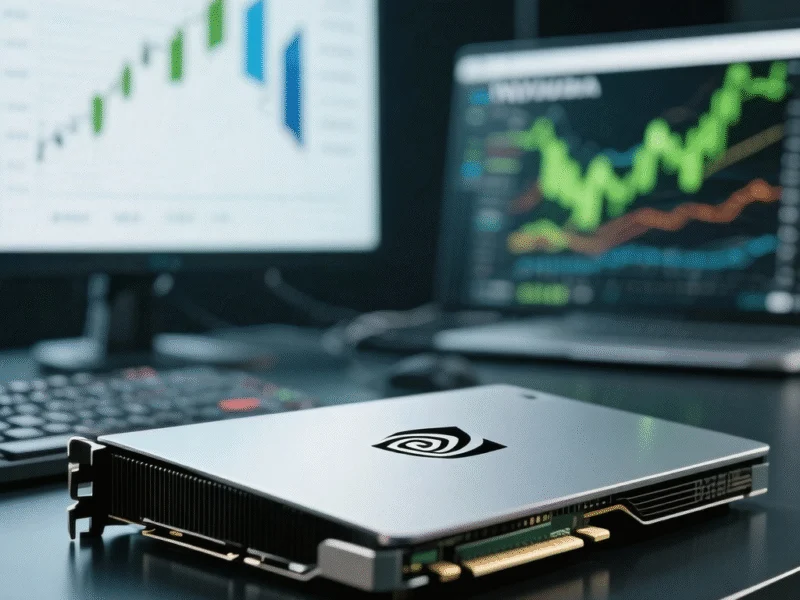Trade war escalation and market volatility dominated Wall Street’s attention during a pivotal week for semiconductor stocks, particularly Nvidia, as President Trump’s renewed China tariff threats triggered the worst single-day decline for the S&P 500 since April. The index plummeted 2.71% on Friday following the president’s announcement of additional 100% tariffs on Chinese imports set to begin November 1, compounding existing trade tensions and creating fresh uncertainty for technology companies.
Market Reaction to Tariff Announcements
The S&P 500 recorded its most significant weekly decline in months, sinking 2.43% overall as investors digested the implications of heightened trade restrictions. The Nasdaq suffered even more substantial losses, dropping 3.56% on Friday alone amid concerns about how new export controls on “critical software” would affect technology companies. The market reaction underscores how sensitive equities remain to trade policy developments, particularly in the technology sector where global supply chains are crucial.
Adding to the market uncertainty, the Trump administration began laying off federal workers on the 10th day of the government shutdown, creating additional economic headwinds. This combination of factors created a perfect storm for investors already nervous about valuation levels and economic growth prospects.
Nvidia’s Competitive Position in AI Chip Market
Despite the broader market turmoil, Nvidia faced its own specific challenges when shares declined early in the week following news that GPU rival Advanced Micro Devices had secured a blockbuster chip-buying agreement with OpenAI. The deal sent AMD stock soaring nearly 24% in a single session and potentially gives OpenAI a 10% stake in the company, raising questions about Nvidia’s dominance in the AI chip space.
Market analyst Jim Cramer advised investors not to overreact to Nvidia’s temporary dip, noting that the AMD-OpenAI agreement alone isn’t sufficient to threaten Nvidia’s leadership position. “In the end — I know this is going to be facetious — I think everybody wins,” Cramer commented, referencing OpenAI’s massive $100 billion equity-and-supply agreement with Nvidia from the previous month.
Oracle’s Cloud Business and Margin Concerns
A separate development emerged when The Information reported that Oracle is experiencing thin margins on its business of renting out Nvidia chips as a cloud provider to clients like OpenAI. According to their analysis, Oracle’s cloud business generated only 14% gross margins on $900 million in sales for the three months ending in August, significantly below Oracle’s overall gross margin of approximately 70%.
Nvidia CEO Jensen Huang addressed these concerns directly during an interview at the October Monthly Meeting, pushing back against the margin pressure narrative. “When you first ramp up a new technology, there’s every possibility that you might not make money in the beginning. But over the life of the system, they’ll be wonderfully profitable,” Huang stated from the New York Stock Exchange.
Broader Implications for AI Industry
The week’s developments highlight several key trends in the artificial intelligence sector:
- Intensifying competition between chip manufacturers as AI adoption accelerates
- Supply chain vulnerabilities exposed by trade policy uncertainties
- Margin pressure for companies providing AI infrastructure services
- Strategic partnerships becoming increasingly crucial for market positioning
Additional coverage from our network provides context on related developments in the AI space, including insights from former OpenAI employees who contributed to ChatGPT’s development. Related analysis also examines how technology executives are responding to Sam Altman’s ambitious vision for AI expansion, while Apple’s potential AI acquisitions suggest the competitive landscape continues to evolve rapidly.
The intersection of trade policy, competitive dynamics, and technological innovation creates both challenges and opportunities for companies like Nvidia navigating this complex environment. As Huang emphasized during his interview, the long-term profitability picture for companies providing AI infrastructure remains strong despite near-term margin pressures and competitive threats.



